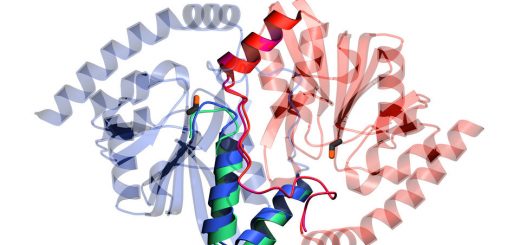I make my perfect yogurt

Author(s): Octavian Horia Minda
Summary
Students will make yogurt to learn about “helpful” microorganisms.
| Subject | Green Biotechnology |
| Topic | |
| Age of students | 7-10 |
| Preparation time | 50’ |
| Teaching time | 70’(2 classrooms) |
| Online teaching material (links for online material) | https://www.youtube.com/watch?v=tyZ5mv8kyikhttps://www.youtube.com/watch?v=1ZSoYrHyX9c http://www.dannon.com/ |
| Offline teaching material | 1-3/4 cups powdered milk4 cups of very warm water1/3 cup of plain yogurt5 one-cup containers with lids (i.e., jelly jars, old yogurt containers, or other food cups with lids)mixing containerwhiskcooler (incubator)fruit topping or pie fillingspoonslitmus paper |
Aim of the lesson
By the end of this lesson students will:
1) -Use science process and thinking skills
2)-Understand science concepts and principles
3)-Communicate effectively using science language and reasoning
4)-Demonstrate awareness of social and historical aspects of science
Background for teachers
What makes milk thicken to make yogurt? During biblical times, people in the Middle East discovered yogurt. They found that when milk was left in a warm place, it thickened and developed a different, tart flavor. More importantly, it kept better than fresh milk. It was centuries later that scientists discovered that tiny bacteria made yogurt. Most yogurts are made from either lactobacillus bulgaricus or streptococcus thermophilus. Once the bacteria are added to milk, these bacteria consume the milk sugars and undergo fermentation, much like the yeast in bread. The benefit of having a fermented milk product is that so much acid is produced by these organisms that few other potentially harmful microorganisms can grow in this acid yogurt environment.
Not all processors process yogurt the same. Live active cultures will be necessary for this bacteria experiment. Making yogurt in the classroom is best done as a demonstration unless you can get several small “incubation ” coolers for each group or team of students.
Activities
Describe here in detail all the activities during the lesson and the time they require. Remember, that your lesson plan needs to revolve around the topic of bioeconomy.
| Name of activity | Procedure | Time |
| Invitation to learn | Ask the children if they know of any items they can buy that is produced by microorganisms. One of the items they mention might be yogurt. Ask the children if any of them have yogurt makers at home. Have they ever made it at home? Is it hard? Is it easy? What might they think they need to make it? Why would heat be needed to make it? Can yogurt spoil if left outside the refrigerator after it is made? To find out, let’s make yogurt in class. | 10’ |
| InstructionalProcedures | Before you begin, make sure you have all the necessary ingredients: containers with lids (You can use previously used yogurt containers, or purchase 2 oz. cups with lids from any restaurant supply store or possibly your school cafeteria.), and a small insulated “cooler ” that will be used as the incubator. Small “lunch tote ” coolers work well, and many come with a container that you can fill with hot water that will surely keep your yogurt warm for the 6-8 hours it will need to incubate. Be sure to use a plain yogurt that contains active cultures. Taste the plain yogurt you plan to use as the starter culture. (Dannon works well.) Your yogurt will have the same taste. Making yogurt in your classroom is easy and really “fool proof ” if you follow the recipe and procedures. | 10’ |
| Experimental activity | 1.Whisk the first two ingredients until dissolved. 2.Add the yogurt and whisk until most of the clumps are dissolved. Work quickly, you don ‘t want the mixture to cool. 3.Pour the mixture into the cups. 4.Before placing the containers into an insulated cooler for 6-8 hours, use one cup to conduct a few simple observations. What is the consistency, pH (use litmus paper), color and smell. Be sure to make these same observations after the incubation period. During this “incubation time ” the bacteria will multiply, ingest the milk sugar (lactose), and thicken the milk turning the mixture into yogurt. One word of caution, yogurt will not thicken or will separate if disturbed or bumped during the incubation period. Coagulation (thickening) changes the chemical makeup of protein so it is no longer water soluble (does not dissolve in water). Heat or acid at the proper temperature coagulates protein. In yogurt, protein is coagulated because acid is produced in a warm environment. If yogurt is moved during incubation (before yogurt is set), liquid and solid will separate. 5.After incubation, refrigerate, add fruit or other flavorings and enjoy! | 30’ |
| assessment | 6.Ask students to complete the “There are bacteria in my yogurt!” worksheet | 20’ |
| Extension | Try some real world science. Allow your students to manipulate the recipe above to see how bacteria thrive best. | Xmin |
| Xmin |
Assessment
WORKSHEET
There are bacteria in my yogurt!
Name_____________________________ Date___________________ Class/Hour_____________
- What process caused a change in the original milk that you began with?
………………………………………………………………………………………………….
- Why did you add a small amount of store-bought yogurt to your milk? What did this addition introduce into your milk mixture?
…………………………………………………………………………………………………….
- Why does the yogurt taste different from the original milk?
……………………………………………………………………………………………………..
- What changes occurred as the milk changed to yogurt? What caused these changes?
…………………………………………………………………………………………………………
- Why did the yogurt mixture need to be incubated in a warm container?
………………………………………………………………………………………………………….
- What if the milk mixture had been too hot or too cold, would the yogurt had set?
…………………………………………………………………………………………………………..
- What would happen if the yogurt culture did not contain active cultures?
………………………………………………………………………………………………………………
- Why does yogurt keep better than fresh milk? 9. What are six things bacteria need to survive?
………………………………………………………………………………………………………………………
Answers:
1) fermentation 2) bacteria 3) the sugars have been converted to an acid 4) liquid to solid as a result of fermentation, a chemical change 5) to get the bacteria to multiply (reproduce) more quickly 6) too hot, it would kill the bacteria, too cold and the bacteria would not become active, consume the milk sugar and ferment the milk 7) nothing, no bacteria, no yogurt 8)the acid condition of yogurt (lack of sugar) keeps other bacteria from a food source 9) food, water, proper temperature, proper acid level (pH), no inhibitors present, host.





